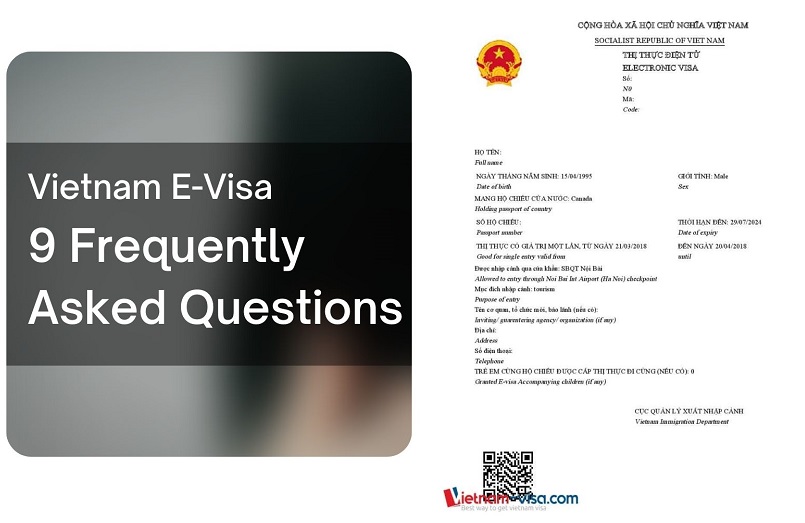Vietnam e-visa now makes the procedure to come to Vietnam simple since it took effect in 2017. The following article will address all of your concerns about Vietnam evisa.

Vietnamese e-visa is one of many types of visa granted by Vietnamese Immigration Department to foreigners to travel to and enter Vietnam.
It is a PDF authorization issued via electronic system; therefore, there’s no stamp in the passport even though its validity is equivalent to a normal visa.
This is a Vietnam e-visa sample:

In order to get a Vietnam e visa online, you must:
As of July 2020, e-visa for Vietnam is applied to nationals of 80 countries travelling to and within Vietnam for any of the following reasons:
Check out Vietnam e visa country list to see if yours is applicable:Andorra, Armenia, Argentina, Australia, Azerbaijan, Austria, Belarus, Bosnia and Herzegovina, Belgium, Brazil, Brunei Darussalam, Bulgaria, Chile, Canada, China (including Hong Kong SAR and Macau SAR passport holders, not applicable to Chinese e-passport holders), Colombia, Croatia, Cyprus, Cuba, Czech Republic, Denmark, Fiji, Estonia, Finland, France, Georgia, Greece, Germany, Hungary, Iceland, India, Italy, Ireland, Japan, Kazakhstan, Latvia, Liechtenstein, Luxembourg, Lithuania, Macedonia, Malta, Marshall Islands, Micronesia, Mexico, Moldova, Montenegro, Monaco, Mongolia, Myanmar, Nauru, Netherlands, New Zealand, Norway, Palau, Panama, Philippines, Poland, Portugal, Qatar, Russia, Republic of Korea, Romania, Salomons Islands, San Marino, Slovenia, Serbia, Slovakia, Spain, Switzerland, Sweden, Timor Leste, United Arab Emirates, United Kingdom of Great Britain and Northern Ireland, Uruguay, United States of America, Venezuela, Vanuatu, and Western Samoa.
E-visa is accepted at all international airports, some land ports and seaports. Qualified Vietnam e visa entry points are issued by the Vietnam Immigration Department:
Vietnam e visa international airports:
Vietnam e visa land crossing ports:
Vietnam e visa seaports:
The e-visa can be obtained in maximum 3 working days when the Vietnam Immigration Department gets your Vietnam e visa online application and full visa fee.
The e visa for Vietnam currently costs US$25. Payment is required to be made online upon your submission of e-visa application form and accepted by either international credit or debit card. Please note that this fee will be not refunded if your application is rejected.
Vietnam e-visa is a single entry and its maximum validity is 30 consecutive days since the entry date on visa application. You can enter and exit on any date within the period stated on your visa. After 30 days, you can extend your e-visa for further 1 month.
First of all, in order to do Vietnam e visa registration, you need to prepare some information and papers in soft copies. Vietnam e visa requirements are below:
Some of Vietnam e-visa photo requirements should be noticed like: photos are in .jpg format, portrait photos must be on in white background and without glasses. Plus, Vietnam e-visa photo size is 4x6cm.
After that, you follow these steps to start your e-visa application:
The result will not be sent to your email. However, after 1-3 working days of submission, you can easily check your application status by this instruction:
It is advised for you to save that result file to your electronic devices and print it out in some copies to bring along when you go on board.
With Vietnam e-visa, there’s no need to queue at Visa on Arrival counters, submit documents and pay for an additional stamp. All you have to do is to bring your printed e-visa copy and valid passport directly to the Immigration counter at the checkpoint and show the officer those 2 papers. That’s how you can enter Vietnam legally.
Above are the guidelines for those planning to come to Vietnam for the first time or who have not done Vietnam e-visa before. This electronic procedure definitely shortens your preparation time and eases your effort to enter Vietnam.